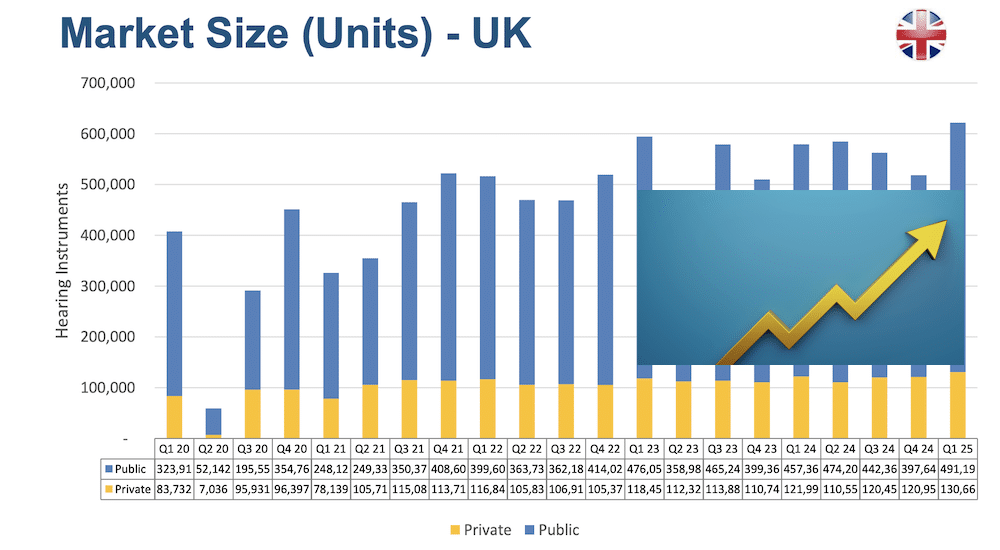Full reimbursement scheme for hearing aids in France revealed
Reimbursement
After several months of intensive discussions, the new “full reimbursement” scheme for hearing aids was revealed on Wednesday, June 13.

French President Emmanuel Macron, when presenting the general thrust of his new social policy, outlined the main features of this new scheme for hearing care, which will be implemented gradually over a period of three years and which will start generating savings for patients as early as 2019. AWN presents this major event and its significance.
The “full reimbursement” (RAC zero in French) for hearing aids is finally on track. It is true that some earlier scenarios which industry stakeholders considered potentially detrimental for the economic viability of the industry were not taken up (for example, service decoupling or capped pricing for Class II hearing aids). However, it is important to bear in mind that the negotiations are not yet completely finished, and a good many “details” still need to be worked out and refined. Another important thing to remember is that the implementation of this reform will be staggered, and move gradually from “Fixed limited reimbursement” to “Full reimbursement” by 2021.
Why is full coverage needed for hearing aids?
Nevertheless, the broad lines of the reform are clear: it is designed to eliminate barriers to hearing care. With an estimated 6million hearing impaired in France, expert consensus sayshalf of them -circa 3 million- would be likely to be fitted. Yet from these 3 million, the most reliable data estimates lessthan 2 million people were fitted in 2015. In terms of publichealth, this underfitting rate entails the infamous “3 Ds”: dementia, depression and dependence. Currently, the French national health insurance offers a reimbursement of exactly €119 net per ear, with an additional €350 on average covered by complementary health insurance, leaving an out-of-pocket expense of about €1,000 euros for adult patients, thus creating a barrier to care for lower income patients. This situation means many individuals who suffer from hearing loss in France are left to grapple with a disability with known detrimental consequences and means there are major inequalities in the access to care. The French government has estimated that the effective fitting rate in France covers 35% of the population suffering from hearing loss. Although this rate is increasing, it is still lower than what can be observed in other European countries. The cost of care is not the only barrier to fitting; however, it is listed as one of the primary causes for not having a hearing aid fitted. This is why the Government hopes to reach a more satisfactory fitting rate of 45% to 50% of the people who need hearing aids, and this public health issue is precisely what the full reimbursement scheme hopes to address.
What is the full reimbursement scheme?
With this new scheme, hearing aids are divided into two categories: the first category (Class I) includes those hearing aids which are covered in full jointly by the social security and complementary health insurances. The second category (Class II) covers those devices sold at uncapped prices, but with median price recommendations.
This fulfils the prescriptions of the French Minister of Health, Agnès Buzyn, that the devices offered in the first category should be high-quality devices, in terms of their aesthetics – ITEs are included in this category – and of their technical performance, and should also provide a minimum set of guarantees: a minimum trial period of 30 days before purchase and a four-year warranty.
What are the technical specificities of Class I devices?
This category is qualitative, and represents approximately 35% of the current market:
What about Class II ?
A big win for hearing care professionals: the rates of Class II devices remain uncapped. The Reimbursement Basis by the French Social Security (BRSS) is the same as that offered for the “full reimbursement” options, which means that by 2021, it will go from €200 to €400 (compared to €800 in Germany, €660 in Belgium, €600 in Italy, etc.). The Government, conjointly with healthcare professionals, is setting in place a mechanism to monitor the evolution of rates, with a view to avoiding potential abuses, or over-prescribing Class II devices to make up for potential loss of earnings from Class I devices. This scheme will, however, cap retail prices for this category should there be excessive price evolutions. Moreover, the Government has indicated that the rate covered by complementary health insurances (“responsible contracts”) sets a limit on the full reimbursement (compulsory and complementary health insurances combined) of €1,700 per ear.
From “Fixed limited reimbursement” to “Full reimbursement”: a gradual reform
The deployment of the reform will begin on January 1, 2019, and be fully implemented by 2021. In practice, the rates of Class I hearing aid will be capped as of January 1, 2019 and gradually reduced. This means that next year, audiologists will have to offer patients a Fixed limited reimbursement offer, with hearing aids which cannot exceed €1,300, leaving an average out-of-pocket expense of only €600 compared to €1,000 today, with average total savings of approximately €400 per ear. In 2020, a new stage will be implemented, with efforts on the part of all actors to offer devices at a capped price of €1,100 euros, bringing down the out-of-pocket expense for patients to just €300. Parallel to this, the Reimbursement Basis by the French Social Security (BSSR) or “Responsibility rate” will gradually increase, going from €200 euros to €300 in 2019, then from €300 to €350 in 2020, to reach €400 euros in 2021. As from 2021, hearing aids will be fully reimbursed within a capped limit of up to €950 per ear. This means that by 2021, all complementary health insurances will have to reimburse €710 to reach the agreed upon “full reimbursement”. The devices which qualify for full reimbursement are equivalent to products which today are sold at between €1,200 and €1,300. For children, the reimbursement of Class I devices will reach €1,400 per ear as from 2019, i.e., with a reimbursement which remains unchanged, but with retail prices capped at €1,400 with a 4 years warranty as for adults. For Class II devices, the prices remain uncapped, but on a reimbursement base of €1,400.
Reinforced professional presence: gradually increasing the numerus clausus
The Government also underlined that because it is paramount to guarantee the availability of professionals and improve the follow-up offered to patients, the number of trained audiologists will gradually be increased, to adapt to the forecast evolutions of the number of people being fitted with hearing aids. By 2021, this number should reach 300, against 214 today, mainly by admitting additional students to existing courses. According to the Ministry of Health, this should ensure better follow-up for patients.
Facilitated and improved follow-up and patient satisfaction evaluation
While the actual fitting of a patient always includes measurement and adjustment services for the four subsequent years, the effective delivery of such services will foster greater traceability: at different stages, patients will complete a satisfaction survey. Moreover, the possibility of changing hearing care professional if a patient relocates, or so requests will be facilitated: the audiologist who fitted the device will transfer the patient’s record and any necessary information for care continuity to one of his or her peers (chosen by the patient).
Greater clarity in complementary health insurance contracts
In the framework of the implementation of the full reimbursement scheme for optical, dental and hearing devices, the French Ministry of Health stressed that “complementary health insurances have collectively committed to improve the readability of their contracts, thereby facilitating comparison between contracts for consumers, and facilitating consumer choice.” All contracts will have to include a table listing the specific warranties they offer, using the same headings and titles for the main healthcare expenditures. Complementary health insurance organisations will also have to harmonise the main headings in their tables of warrantees and use these headings across all the resources intended for policy holders. The Ministry of Health underlined “this harmonization of the main headings will make it easier to compare contracts”. In addition, a table providing examples of reimbursements expressed in Euros and including specific mandatory services will also be made available to current or prospective policy holders to enable them to assess the coverage offered by their current contract or an alternative one that is proposed to them. These measures will be implemented gradually over 2019, with a full implementation scheduled for January 1, 2020.
A strong political commitment
Emmanuel Macron, during his presentation of the broad lines of his social policy and the implementation of the full coverage policy for dental, optical and hearing devices, stated he wanted to “reinforce prevention considerably, particularly among the young people, with automatic vision and hearing screening.” Under the terms of the Prevention Priority Plan (Plan Priorité Prévention) presented by the French Government on March 26, the mandatory check-ups currently focusing on children under six years old, will be redesigned and deployed at a larger scale, to set up new screening programs for the 8 to 9 year olds, the 11 to 13 year olds and the 15 to 16 year olds, covered in full by the French national health insurance security. These check-ups will include an auditory assessment. Thanks to this scheme, the French Head of State hopes to provide better prevention, and ultimately to reduce spending. For the French President, the full reimbursement scheme is an “essential social achievement”, promising there will be no “fool’s deals” when it comes to the rates practiced by complementary health insurances. He further added: “many of our fellow citizens give up on getting care” and so they are “deprived of being able to smile, to see and to hear”, which he qualified as a cause for “personal tragedies”.
As part of the overall profound restructuring of the French healthcare system, the French President also announced the upcoming presentation of a law on pensions “at the beginning of 2019” as well as a law on subsidies for dependency, which will be voted at the end of 2019 to “tackle a new form of social vulnerability”.


